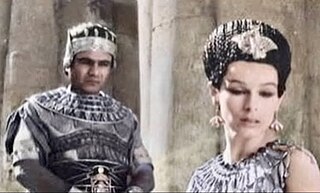
Hanna-Barbera was an American animation studio and production company, which was active from 1957 until its absorption into Warner Bros. Animation in 2001. Founded on July 7, 1957 by Tom and Jerry creators William Hanna and Joseph Barbera, it was headquartered on Cahuenga Blvd from 1960 to 1998, then subsequently at the Sherman Oaks Galleria in Sherman Oaks. In 1958, The Huckleberry Hound Show debuted, then The Flintstones, The Yogi Bear Show, The Jetsons, Jonny Quest, Wacky Races, Scooby-Doo, Where Are You! and The Smurfs followed.

United Productions of America, better known as UPA, was an American animation studio and later distribution company founded in 1941 as Industrial Film and Poster Service by former Walt Disney Productions employees. Beginning with industrial and World War II training films, UPA eventually produced theatrical shorts for Columbia Pictures such as the Mr. Magoo series. In 1956, UPA produced a television series for CBS, The Boing-Boing Show, hosted by Gerald McBoing Boing. In the 1960s, UPA produced syndicated Mr. Magoo and Dick Tracy television series and other series and specials, including Mister Magoo's Christmas Carol. UPA also produced two animated features, 1001 Arabian Nights and Gay Purr-ee, and distributed Japanese films from Toho Studios in the 1970s and 1980s.

The golden age of American animation was a period in the history of U.S. animation that began with the popularization of sound synchronized cartoons in 1928 and gradually ended in the 1960s when theatrical animated shorts started to lose popularity to the newer medium of television. Animated media from after the golden age, especially on television, were produced on cheaper budgets and with more limited techniques between the 1960s and 1980s.
Animation in the United States in the television era was a period in the history of American animation that slowly set in with the decline of theatrical animated shorts and the popularization of television animation that started in the late 1950s, reached its peak during the 1970s, and ended around the mid-1980s. This era is characterized by low budgets, limited animation, an emphasis on television over the theater, and the general perception of cartoons being primarily for children. Due to the perceived cheap production values, poor animation, and mixed critical and commercial reception, the era is generally looked back upon negatively by critics and animation historians. The television animation of this period is often referred to as the dark age of American animation, while the theatrical animation from the time is sometimes referred as the bronze age.
Modern animation in the United States from the late 1980s to the early 2000s is frequently referred to as the renaissance age of American animation. During this period, many large American entertainment companies reformed and reinvigorated their animation departments, following the dark age, and the United States had an overall profound effect on animation globally.
The history of anime can be traced back to the start of the 20th century, with the earliest verifiable films dating from 1917. Before the advent of film, Japan already had a rich tradition of entertainment with colourful painted figures moving across the projection screen in utsushi-e (写し絵), a particular Japanese type of magic lantern show popular in the 19th century. Possibly inspired by European phantasmagoria shows, utsushi-e showmen used mechanical slides and developed lightweight wooden projectors (furo) that were handheld so that several performers could each control the motions of different projected figures.
While the history of animation began much earlier, this article is concerned with the development of the medium after the emergence of celluloid film in 1888, as produced for theatrical screenings, television and (non-interactive) home video.
Turner Entertainment Company is an American multimedia company founded by Ted Turner on August 2, 1986. Purchased by Time Warner on October 10, 1996, as part of its acquisition of Turner Broadcasting System (TBS), the company was largely responsible for overseeing the TBS library for worldwide distribution. In recent years, this role has largely been limited to being the copyright holder, as it has become an in-name-only subsidiary of Warner Bros., which currently administers their library.

A short film is a film with a low running time. The Academy of Motion Picture Arts and Sciences defines a short film as "an original motion picture that has a running time of 40 minutes or less, including all credits". In the United States, short films were generally termed short subjects from the 1920s into the 1970s when confined to two 35 mm reels or less, and featurettes for a film of three or four reels. "Short" was an abbreviation for either term.

Rankin/Bass Animated Entertainment was an American production company located in New York City, and known for its seasonal television specials, usually done in stop motion animation. Rankin/Bass's stop-motion productions are recognizable by their visual style of doll-like characters with spheroid body parts and ubiquitous powdery snow using an animation technique called Animagic.

Toei Animation Co., Ltd. is a Japanese animation studio primarily controlled by its namesake Toei Company. It has produced numerous series, including Sally the Witch, GeGeGe no Kitarō, Mazinger Z, Galaxy Express 999, Cutie Honey, Dr. Slump, Dragon Ball, Saint Seiya, Sailor Moon, Slam Dunk, Digimon, One Piece, Toriko, World Trigger, The Transformers, and the Pretty Cure series.
Madhouse, Inc. is a Japanese animation studio founded in 1972 by ex–Mushi Pro staff, including Masao Maruyama, Osamu Dezaki, and Yoshiaki Kawajiri.

Warner Bros. Animation Inc. is an American animation studio which is part of the Warner Bros. Television Studios, a division of Warner Bros., which is a subsidiary of Warner Bros. Discovery and serves as the animation division and label of Warner Bros.
Wang Film Productions Co., Ltd. is one of the oldest and most prolific Taiwanese-American animation studios since 1978. The company, based in Xindian, Taipei and Los Angeles, California, has done traditional hand-drawn 2D animation/ink and paint for various TV shows and films for studios across North America, Europe and Asia-Pacific.
Anime-influenced animation or Animesque is a type of non-Japanese works of animation that are similar to or inspired by anime. Generally, the term anime refers to a style of animation originating from Japan. As Japanese anime became increasingly popular, Western animation studios began implementing some visual stylizations typical in anime—such as exaggerated facial expressions and "super deformed" versions of characters.

Cartoon Network, often abbreviated as CN, is an American cable television channel owned by Warner Bros. Discovery. It is a part of The Cartoon Network, Inc., a division that also has the broadcasting and production activities of Boomerang, Cartoonito, Discovery Family, Adult Swim, and Toonami under its purview. The channel is headquartered at 1050 Techwood Drive NW in Atlanta, Georgia.
Filipino animation, also known as Pinoy animation, is a body of original cultural and artistic works and styles applied to conventional Filipino storytelling, combined with talent and the appropriate application of classic animation principles, methods, and techniques, which recognizes their relationship with Filipino culture, comics, and films. It also delves into relying on traditional and common Filipino "sense of going about things" or manner of coping with Filipino life and environment.

These lists of animated feature films compile animated feature films from around the world and are organized alphabetically under the year of release. Theatrical releases as well as made-for-TV (TV) and direct-to-video (V) movies of all types of animation are included. Currently, the lists don't recognize one release form from another.













